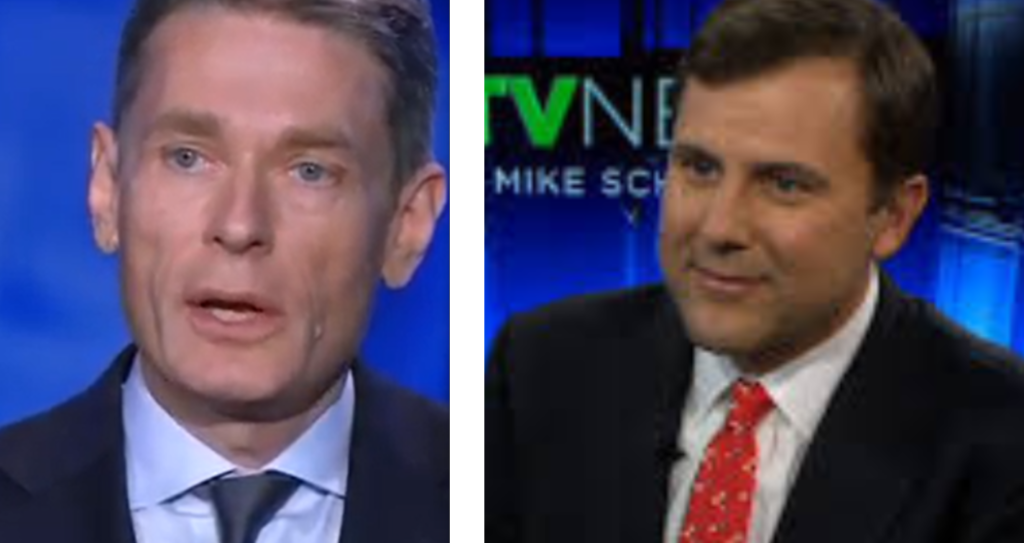Establishing Strategies Ahead of a Possible 2022 Mid-term Massacre

The Pew Research Center recently released a study called “Beyond Red vs. Blue: The Political Typology.” The survey shows interesting cleavages within both the Democratic and Republican parties and offers an interesting lens to look at New Jersey politics.
You can find the full report from Pew here, so I won’t go into too much detail on it. You can even take a small-scale version of the survey here. The results are based on a national survey measuring political ideology, party affiliation and participation in politics. The survey identifies four types of Republicans and four types of Democrats, and the authors give them easy to understand names.
On the Republican side you have Faith and Flag Conservatives who account for 10% of the total sample but 23% of those identifying as Republican, Populist Right (11% total, 23% of Republicans) Ambivalent Right (12% and 18%) and Committed Conservatives (7% and 15%). On the Democratic side you have Democratic Mainstays (16% of total and 28% of Democrats) Establishment Liberals (13% and 23%) Outsider Left (10% and 16%) and Progressive Left (6% and 12%) In addition, the survey identified a group called Stressed Sideliners which as a group don’t pay much attention to politics and don’t always have a consistent political ideology. They make about 15% of the overall sample and in each party.
The edges are smaller than they seem
The first thing to notice is that the two factions on the ideological ends of each party are actually fairly small. Faith and Flag Conservatives are only 10% of the total population and Progressive Left are only 6% of the total population. The difference is that among Republicans these folks are tied with the Populist Right as the biggest faction, each accounting for 23% of all Republicans. That means 46% of those identifying as Republican are on the right wing of the ideological scale. This makes Jack Ciattarelli’s decision to spend so much time proving his right wing bona fides a bit more understandable. On the Democratic side, the two factions farthest out (in this case farthest left) on the ideological scale (the Progressive Left and the Outside Left) only account for 28% of self-identified Democrats. This makes Phil Murphy’s decision to spend so much time focusing on his left-wing bona fides a bit less understandable. Although in Murphy’s defense, the survey also indicates that while both of these factions are small, they are among the most active and politically engaged in the entire sample. They are also the youngest.
Where the Democrats are
There is a famous quote with various versions attributed to John Adams, Victor Hugo and Winston Churchill. In essence it says,
“A ‘man’ of 20 who is not a liberal has no heart but a ‘man’ of 40 who is not a conservative has no head.”
The Pew study, while of course steering clear of those characterizations, clearly show that the two most liberal factions of the Democratic party (Progressives and Outsiders) are where the young people are. This is problematic for Democrats for two reasons. The first is that young people don’t stay young. As we age, we tend to become less liberal. Anyone who smoked a ton of pot in high school will realize this when their teenagers ask if you ever got high. But the bigger problem for Democrats is that those engaged, and politically active young progressives tend to live in safe Democratic districts not in swing democratic districts. In New Jersey, the average age in a safe Democratic district (6th, 8th, 9th, 10th, 12th) is 37. In the unsafe seats that Democrats currently hold (1st, 3rd, 5th, 7th and 11th) the average age is 42.
For many Democrats the hope is that this moderating trend of age will go away. That is perhaps possible if Republicans remain as beholden to the far right as they are today. When faced with people and a party willing to turn a blind eye to insurrection perhaps moderation will no longer trend along with age. But we won’t know if that is going to happen for at least a decade. And as the 1960s hippies turned in to Reagan Democrats there is a lot of history that says the odds are long.
Perhaps a more productive strategy for Democrats who would like to stop a 2022 mid-term massacre, is to focus on making sure the bigger factions of Democrats, actually stay Democrats. Two of the Democratic factions (Democratic Mainstays and Establishment Liberals) count for just over half of all self-identified Democrats. In addition to being older, both groups tend to express greater levels of “pro-American” sentiment. Both groups tend to express significantly greater anxiety over immigration policies and perceptions of rising crime. Both report higher support for the military and at least among Democratic Mainstays that support can rival levels on the Republican side. Both groups are more likely to believe that “working across the aisle” within existing institutions is a good thing and still possible. In general, these groups understand the importance of racial and social disparities in society but believe that existing social institutions can and do work to fix them. They might agree with many progressive economic and social policies. But they shudder and run away from progressive messaging that seems to radically attack the institutions of society they think may responsibly implement those policies.
In short, these are the type of Democrats that live in the 1st, 3rd, 5th, 7th and 11th and might even still exist in the 2nd congressional districts of New Jersey. Know what else these districts have in common? Republican Jack Ciattarelli won all of them. That is a fact that should scare the crap out of Democrats almost as much as the specter of a second Trump presidency. Well ok not that much, but still.
Nationally, Democrats have choices to make on the paths they want to take. They can wait and hope and pray that changing demographics will continue and solidify their existing advantages. They can make passionate progressive arguments and hope that more people see the light, while at the same time hoping that those arguments don’t blind people skeptical and anxious about change. They can demonize and attack elected Democrats in the center to try to force them to the left.
Or they can move to the middle and fight like hell to retain the types of Democrats that New Jersey elected to Congress in 2018. My fear is that unless Democrats fight like hell right now for as much of the middle as they can get, all the passionate hoping, wishing, waiting, and praying will die in a Republican congress in 2022 and with a Republican president in 2024.
Matt Hale is Associate Professor of Political Science & Public Affairs at Seton Hall University








Leave a Reply